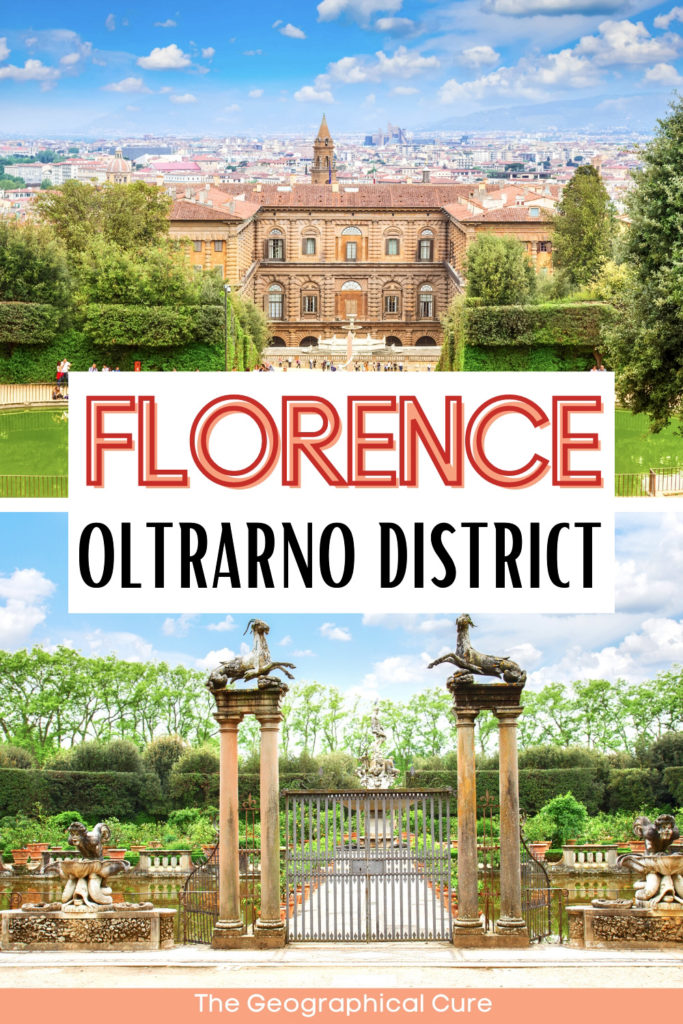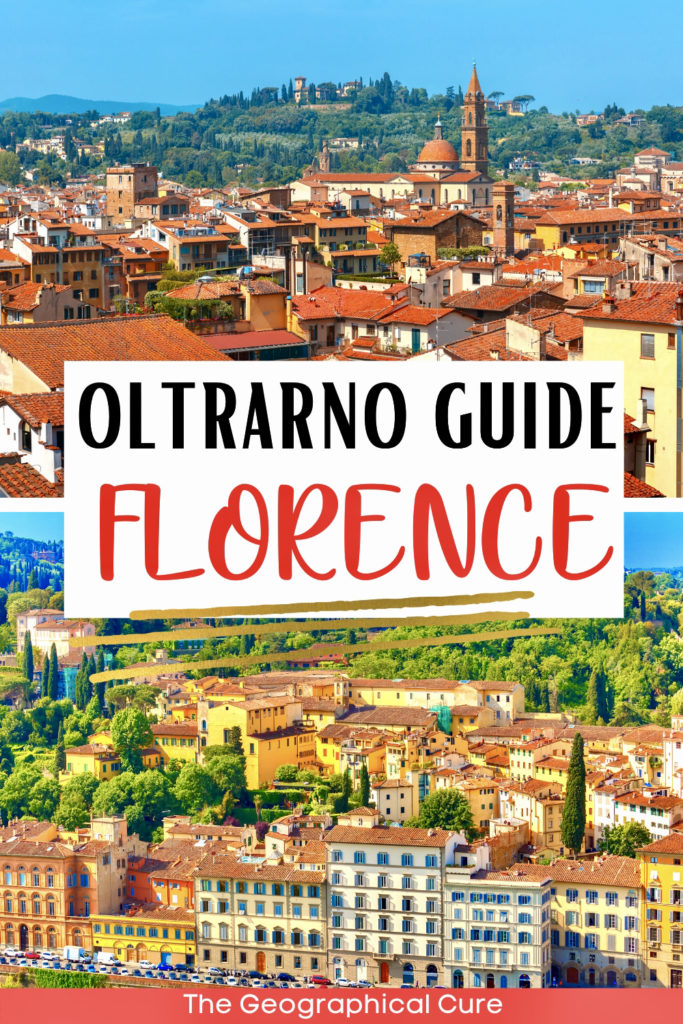Are you planning a trip to Florence and looking to explore beyond the typical tourist hotspots? Look no further than the Oltrarno neighborhood, located on the other side of the Arno River from the city center.
This Oltrarno itinerary covers all the must see attractions in Oltrarno in just one day, with a step-by-step walking tour to ensure you don’t miss a thing.
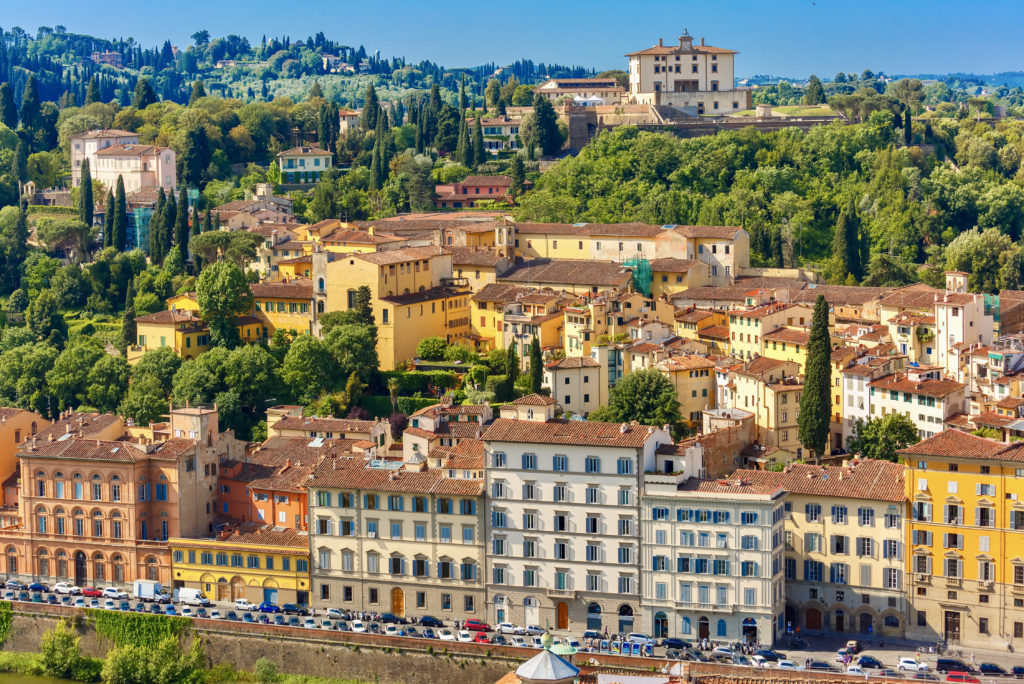
Known as Florence’s “rive gauche,” or left bank, Oltrarno is a chic and charming neighborhood in the southern part of the city.
As a repeat visitor or someone looking for unique things to do in Florence, Oltrarno is an ideal place to explore. In fact, it’s my personal favorite neighborhood in the city – and with so much to discover, I think it’ll become one of yours too!
The Oltrarno is home to some of Florence’s best hidden gems and leafy green spaces.
READ: Nutshell History of Florence
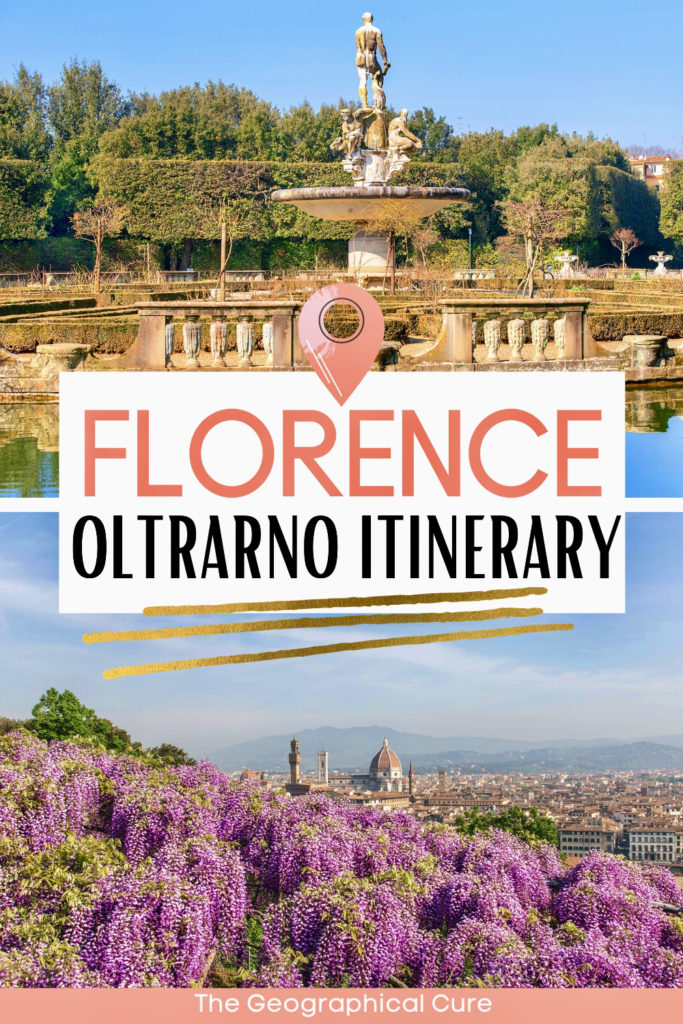
One Day Itinerary For The Attractions In Florence’s Oltrarno Neighborhood
Here’s my list of the 15 best things to do and see in Oltrarno in 1 day. This one day Oltrarno itinerary takes you on walking tour from the Ponte Carraia to the Church of San San Miniato al Monte.
The attractions are listed in the order you’ll encounter them, walking west to east. Along the way, in one day in Oltrarno, you’ll see:
- San Frediano, Florence’s trendiest district
- Brancacci Chapel, Masaccio frescos
- Basilica of Santo Spirito
- Palazzo Pitti, Renaissance masterpieces
- Florence’s best green spaces
- Florence’s best viewpoints
- Basilica of San Miniato al Monte
You can also book a guided walking and food tour in the Oltrarno.
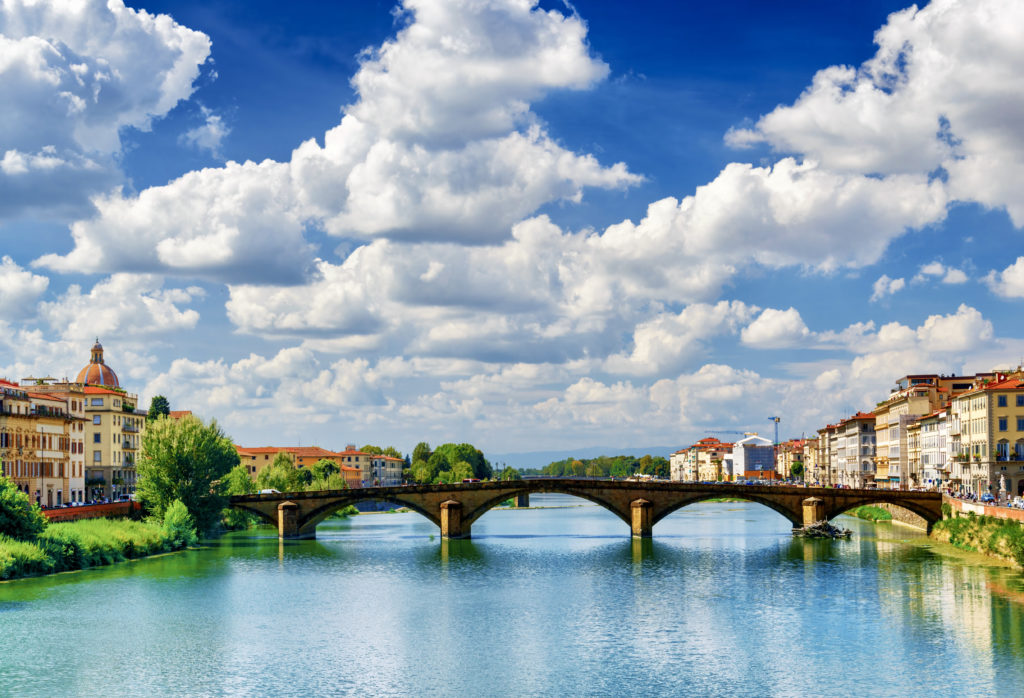
1. Ponte alla Carraia
For this one day in Oltrarno itinerary, it makes the most sense to start your walking tour at Ponte alla Carraia. You can cross the bridge from the Piazza Gondoli. It’s only a 10 minute walk to Ponte Carraia from Florence Cathedral.
This five arched bridge was originally known as the Ponte Nuovo. This was because it was the second bridge built in Florence after the iconic Ponte Vecchio.
Cross the bridge, go one block, and then take a right down the Borgo San Frediano.
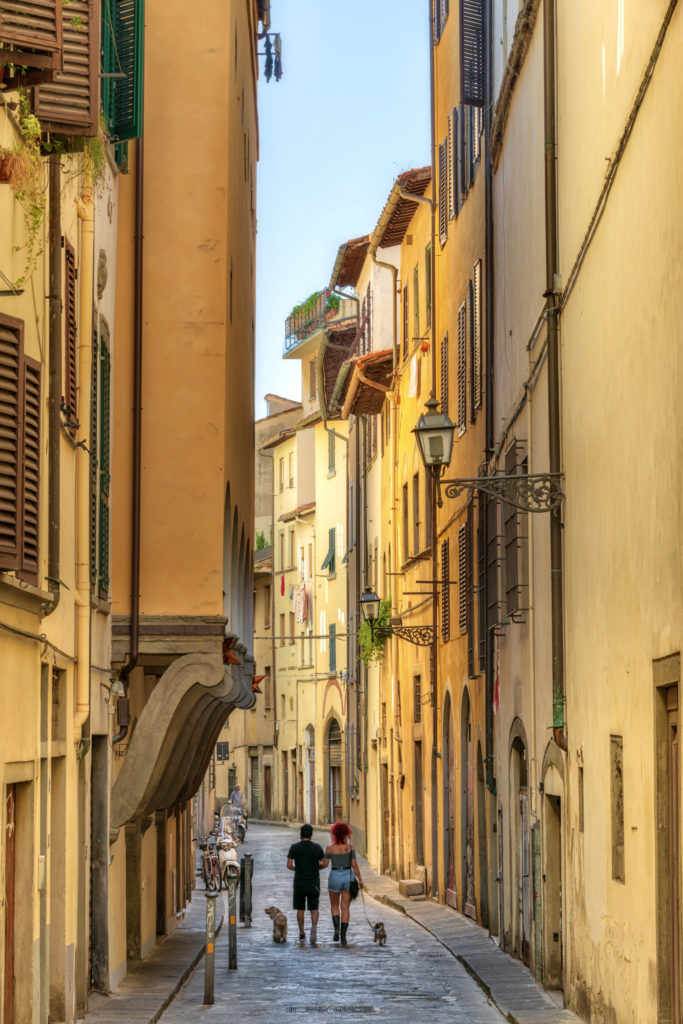
2. San Frediano
Start your one day in Oltrarno by wandering in the medieval San Frediano neighborhood. The main drag is Borgo San Frediano. The ancient gate Porta San Frediano marks the entrance to the street.
Lonely Planet has named San Frediano as one of the coolest neighborhoods in the world. The neighborhood is practically untouched by tourism and has a village atmosphere.
Narrow streets are chock full of small artisan shops and local bars and cafes. You can pop in and see how sculpture is made at the Romanelli Sculpture Studio on Borgo San Frediano.
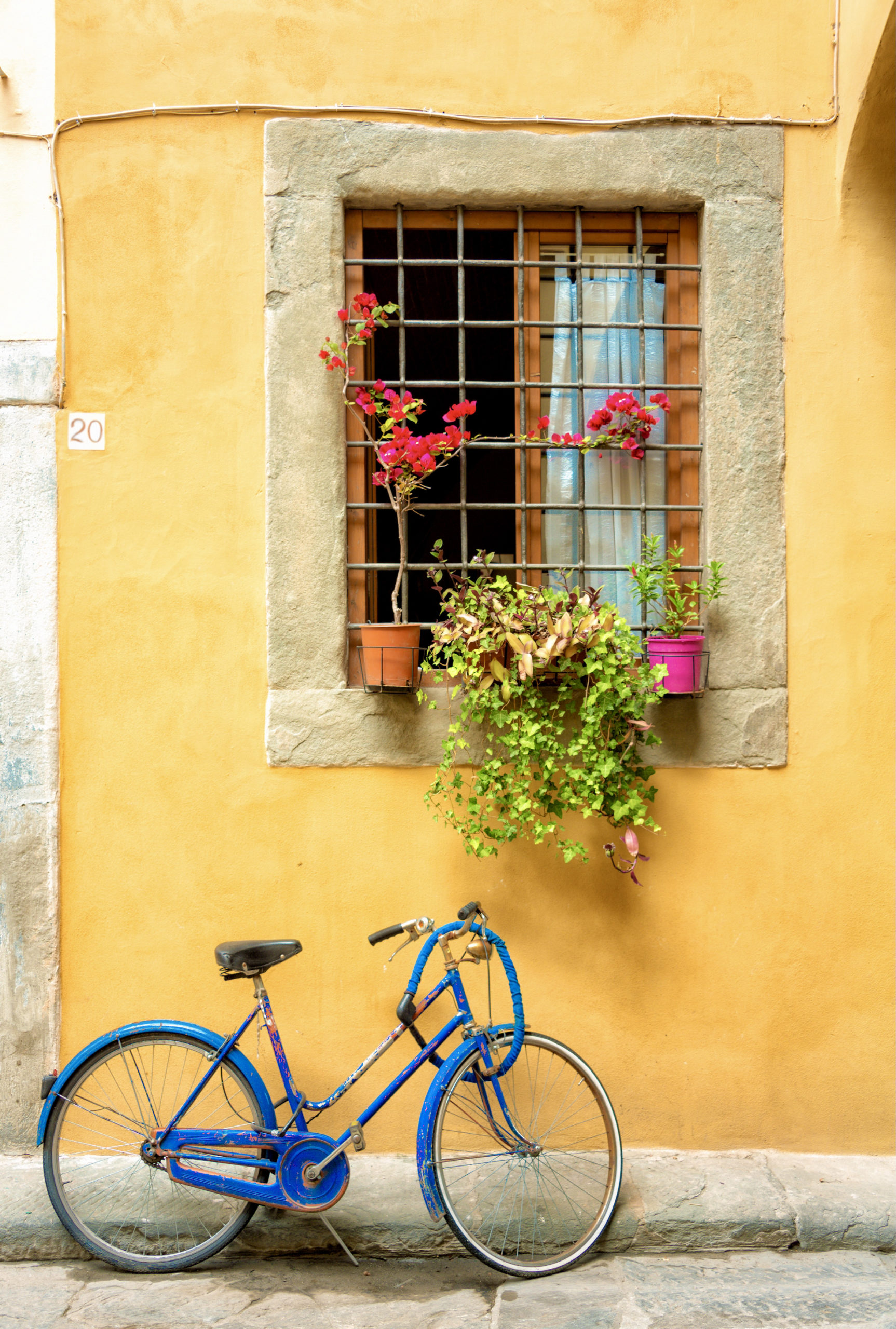
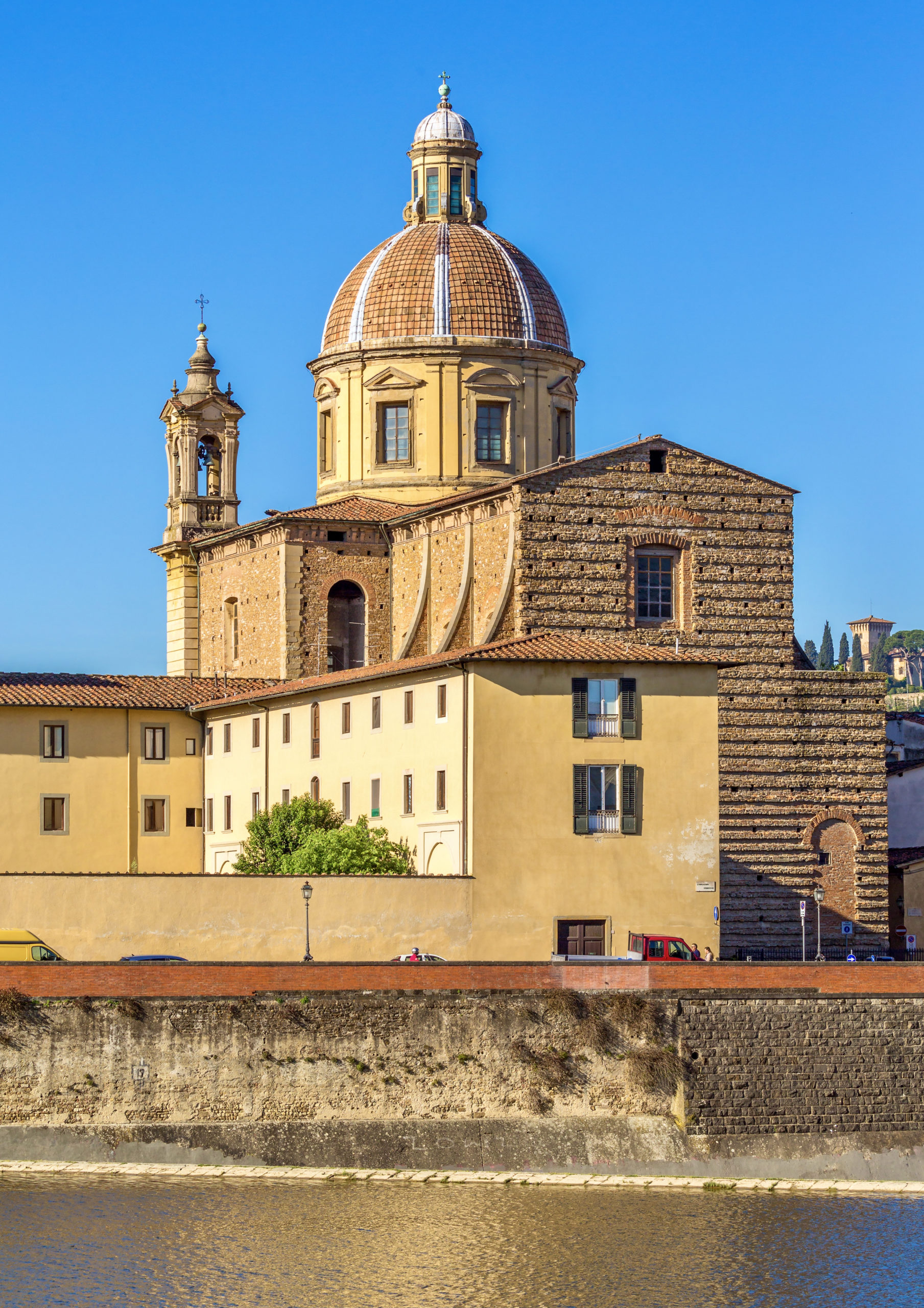
If you need coffee or pastries, pop into Sweet Things or the book-cafe La Cite. La Cite is an institution in Florence. If you’re on the gelato trail in Florence, be sure to stop at La Carraia.
The church to see in San Frediano is San Frediano in Cestello on the Lungarno Soderini. It’s one of the many churches of Florence whose brownstone facade was left unfinished.
Inside, it’s a prime example of Florentine architecture of the late Baroque. The church has an imposing dome and bell tower.
Inside, the cupola was frescoed by Antonio Gabbiano. The refectory (dining hall of the former convent) has a Last Supper painting.
READ: Last Supper Paintings From Renaissance Italy
3. Brancacci Chapel
Further down Borgo San Frediano is the Church of Sant Maria del Carmine. The church itself is nothing special. But it houses a masterpiece of Renaissance painting, the Brancacci Chapel. It’s nicknamed the “Sistine Chapel of the Early Renaissance.”
The frescos in the chapel were painted by Masaccio and changed the course of Western art. When Masaccio died tragically young at just 27, the frescos were finished by Filippino Lippi 50 years later.
Masaccio was the first painter in art history to experiment with linear point perspective. Masaccio adapted the techniques of the architect Brunelleschi, a pioneer of perspective theory. It gave his paintings the illusion of depth in place of flat surfaces.
The Expulsion of Adam and Eve is particularly compelling. This scene shows that Masaccio’s skill went beyond mere technical innovation. In the faces of Adam and Eve, you see terrible shame and suffering depicted with a humanity rarely achieved in art.
Reservations to see the chapel are mandatory. Here’s my complete guide to the Brancacci Chapel.
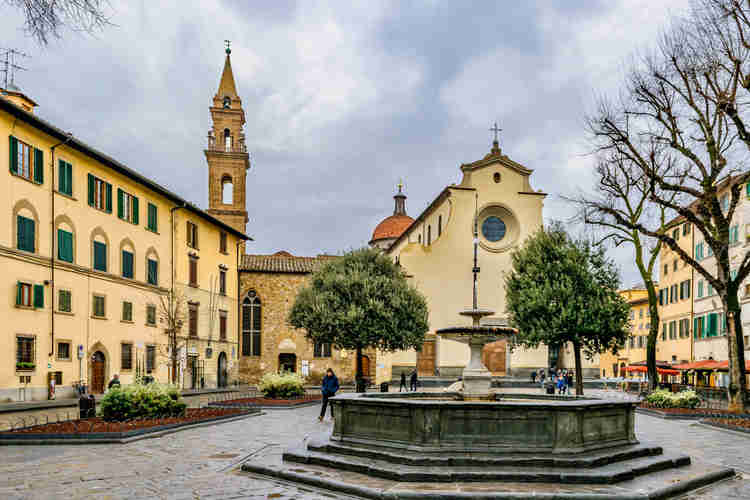
4. Santo Spirito
Next, head to the Piazza Santo Spirito, the central hub of the Oltrarno. You’ll find Brunelleschi’s second church in Florence, the Basilica of Santa Spirito. (His first church is the Basilica of San Lorenzo in northern Florence.)
The church has a stark and unfinished facade. But the interior is one of the most important Early Renaissance spaces in Italy.
It was here that Brunelleschi supplied definitive solutions for how to combine architectural elements from antiquity with Renaissance concepts of symmetry and order.
The main altar, an out of place Baroque affair, is at the center of the crossing square. Three sides of Santo Spirito have a continuous succession of 40 identical semi-circular chapels. The massive pietra forte Corinthian columns give the church a monumentality.
Santo Spirito houses a wooden crucifix attributed to Michelangelo. It was carved when the artist was only 17. Restored, it now hangs 22 meters high in the sacristy.
The room was designed by Lorenzo the Magnificent’s favorite architect Giuliano da Sangallo. For 3 euros, you can access the sacristy from the cloister and see the crucifix in the round.
READ: Michelangelo Trail in Florence
If you only have time to visit one monument in Oltrarno, it should be Santo Spirito. In the Santo Spirito refectory, adjacent to the church, you can also see the remains of Andrea Orcagna’s fresco of the Crucifixion.
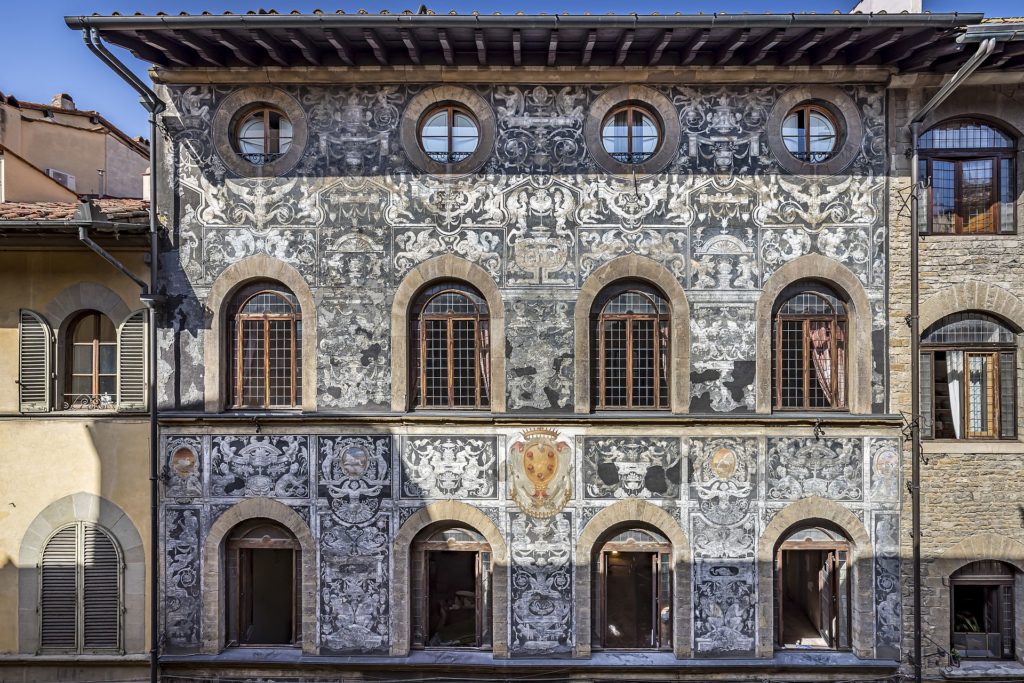
5. Via Maggio
After visiting Santo Spirito, cut across to Via Maggio. This Oltrarno street is where you can browse for antiques like statuary, paintings, or textiles.
The oldest and most notable building on the Via Maggio is the unique Renaissance-style Palazzo di Bianca Cappello. It originally belonged to the Corbinelli family.
The palace is now a luxury hotel. But it’s worth pausing to admire the facade. The Palazzo di Bianca Cappello boasts one of the most beautifully decorated facades in the whole of Florence.
It’s based on a technique that is known as sgraffito, which means to sketch. The palace was renovated by the architect Bernardo Buontalenti.
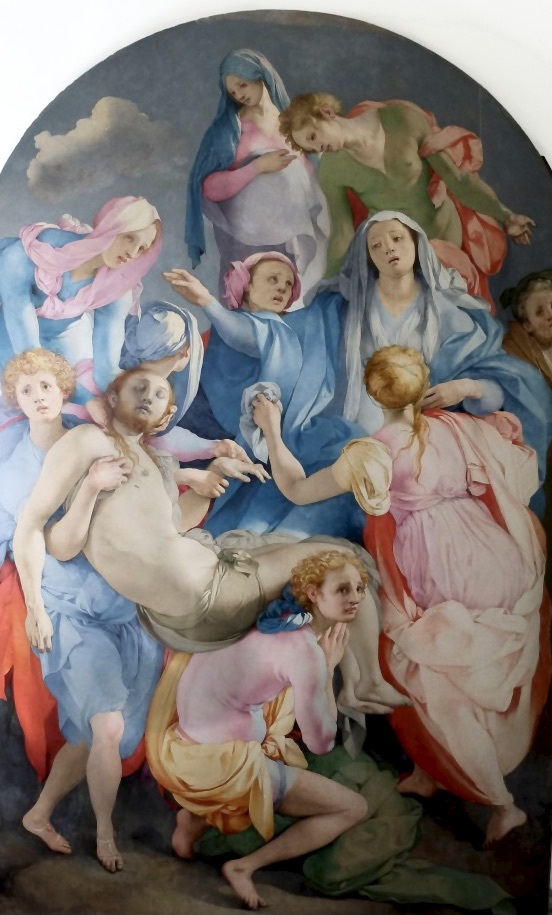
6. Santa Felicita
After visiting the Brancacci Chapel, backtrack back down Via Santo Spirito and Borgo San Jacopo to the small Church of Santa Felicita.
It’s about 40-50 feet from the Ponte Vecchio, on the Vasaari Corridor path (which partially obscures the church).
This is one of Florence’s oldest churches, with a Baroque facade remodeled in 1736-39. The main reason to visit the church is to see one of the masterpieces of Mannerism — painter Jacopo Pontormo’s Deposition.
It’s the Florentine paintier’s best known work. Pontormo had seen the Sistine Chapel and been influenced by Michelangelo’s frescos.
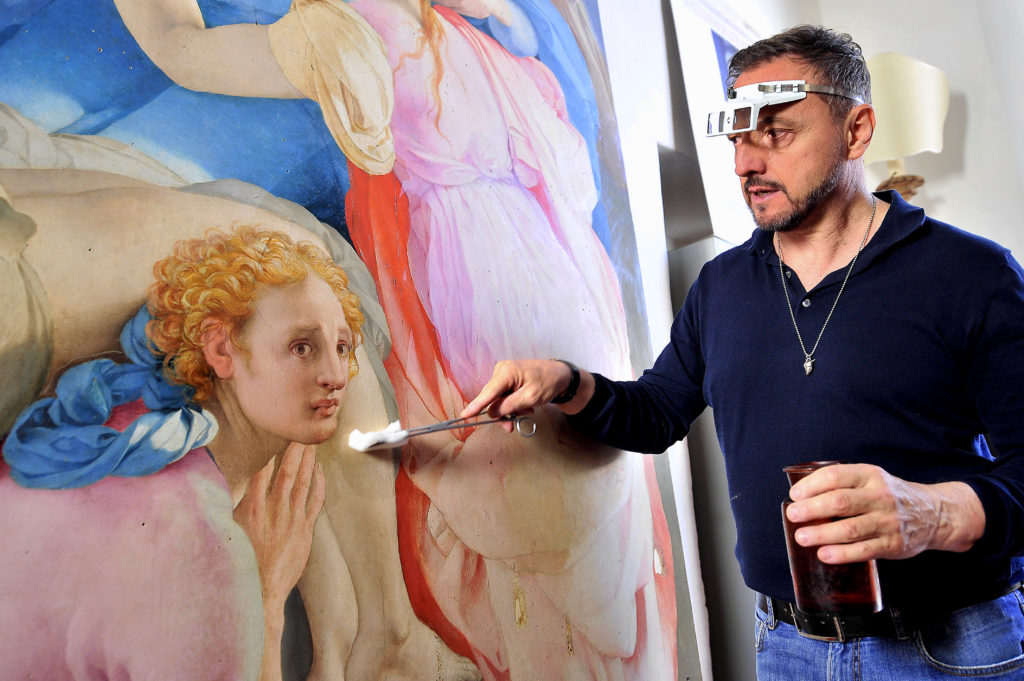
The Deposition is the centerpiece of the Cappella Capponi. The chapel is on the right as you enter Santa. Felicita. It was designed by Brunelleschi for the Barbadori family around 1420.
It’s a strange late Renaissance/Mannerist painting. The figures aren’t classical. You almost can’t tell whether it depicts a pieta or an entombment.
There’s no cross in the picture. There’s no even the usual blood, dirt, or crown of thorns. The figures are portrayed floating in tangled and twisting shapes. Pontormo used his trademark intense pastel colors.
In the far center right is a self portrait of Pontormo. To the right of the Deposition is the exquisitely frescoed (and more restrained) Annunciation, also by Pontormo.
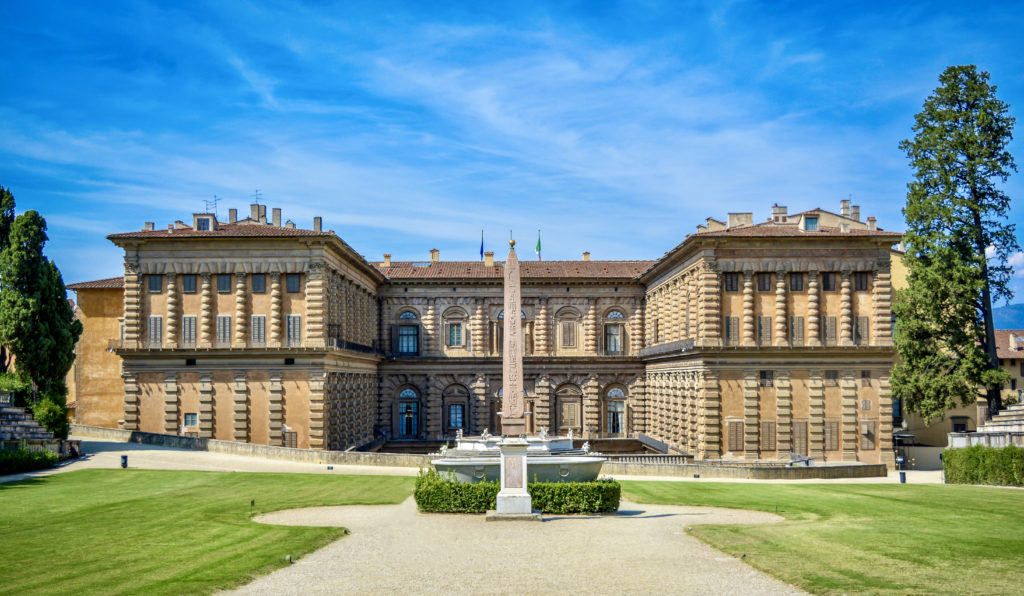
7. Pitti Palace
Continue your one day in Oltrarno itinerary with a visit to its swankiest digs. The Pitti Palace is the top attraction in the Oltrarno and one of Florence’s largest architectural set pieces. The original palazzo was built for the Pitti family around 1460.
In 1549, Eleanor de’ Medici, the wife of Cosimo I de’ Medici, bought the property. The architect Bartolomeo Ammannati was commissioned to make substantial additions and renovations. He operated on the principle that more is better, creating an ornate monolithic structure.
READ: History of the Medici
The palace remained the seat of the Medici court for three centuries. Today, the palace is given over to a series of museums.
The one you can’t miss is the Palatine Gallery. This museums houses the Medici’s personal treasures that couldn’t fit into the Uffizi Gallery. Despite this, it easily rivals the more famous museum.
There are incredible masterpieces by Raphael, Titan, Caravaggio, Rubens, Botticelli, and Filippo Lippi. They’re displayed as they were during the Medici era, chock a block on top of each other in ornate rooms.
Some of the masterpieces you can’t miss include: Pietra da Cortona ceiling frescos, Caravaggio’s Sleeping Cupid, Raphael’s Woman With A Veil and Madonna of the Chair, Lippi’s Madonna and Child, and Giogioine’s The Three Ages of Man.
Here’s my complete guide to the masterpieces of the Pitti Palace. Click here to book a skip the line ticket for the palace. You can also book a guided tour of the palace and the Boboli Gardens.
8. Boboli Gardens
As you stand in the courtyard of the Pitti Palace, you’ll notice the main entrance to the breathtaking Boboli Gardens just a few steps away. The initial plans for the gardens were drawn up by Niccolò Tribolo.
But after his passing, other notable names in Italian architecture and design – including Giorgio Vasari, Ammannati, Giambologna, and Bernardo Buontalenti – continued the work, resulting in the magnificent outdoor space we see today.
The Boboli Gardens are the largest green space in Florence, sprawling over 11 acres and considered one of the largest gardens in Italy. It’s the perfect place to take a break and relax during your visit to Oltrarno.
The gardens were first opened to the public in 1776 and serve as an open-air museum, with countless hidden corners and delightful surprises to discover. With so much to explore, the Boboli Gardens are a must-see for any visitor to Florence.
The gardens are laid out in the Italian style, with beautifully worn Renaissance statues and fountains. The Rococo Kaffeehaus is on the eastern edge of the gardens. Its terrace is the perfect viewing point.
The Grotto Grande, also known as the Buontalenti Grotto, is a fascinating folly. In 16th century Tuscany, it was the fashion to build decorative grottos reconstructing natural caves.
The grotto once had a fresco by Michelangelo (now in the Accademia) and has casts of his four slaves.
Click here to book a skip the line ticket for the Boboli Gardens. Click here to book a guided tour.
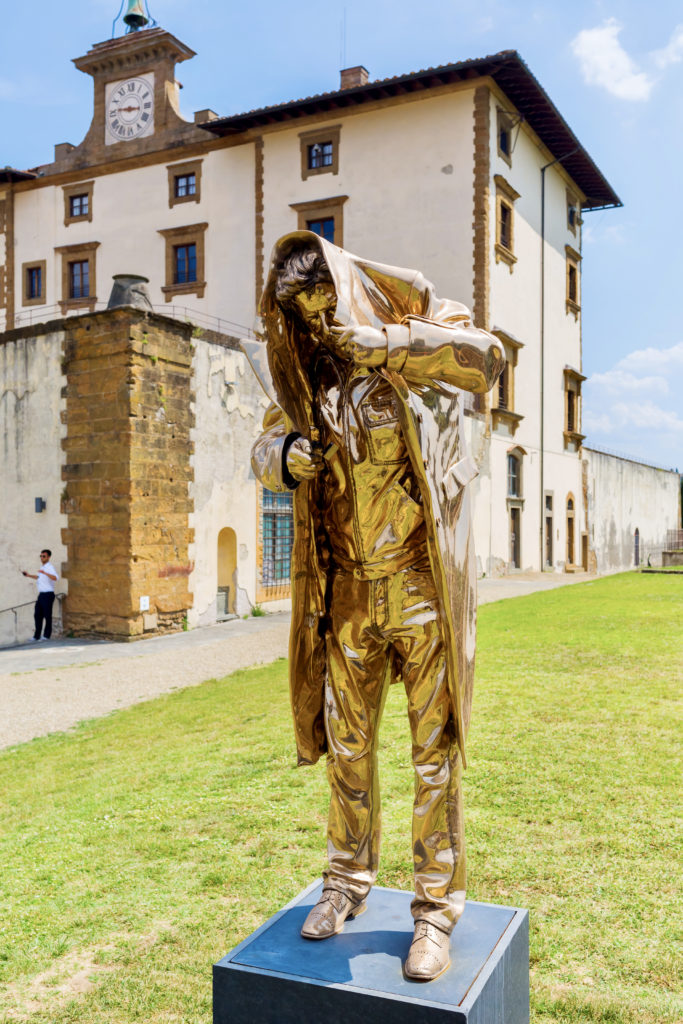
9. Fort Belvedere
Fort Belvedere is in the Boboli Gardens. If you have the energy, walk up the hill for a commanding view. This impressive structure was built in 1590 to help defend the city against siege.
To the north, all of Florence’s monuments are spread out in a breathtaking panorama. To the south, the nearby hills furnish a pretty rural view.
Once a first rate fortification, the fort is now a civic museum used as an art exhibition venue.
10. Bardini Gardens
The Bardini Gardens are situated between Costa San Giorgio and Borgo San Niccolo. They’re east of the more famous Boboli Gardens, but much less crowded.
Beginning in the 13the century, the gardens belonged to the Mozzi family. In the 20th century, famous art dealer Stefano Bardini purchased the villa, gardens, and the surrounding properties. The gardens officially opened to the public in 2005, after a massive restoration.
The Bardini Gardens contains four hectares of woods, cypress trees, gardens and fruit orchards. It’s the perfect serene environment to take a relaxing stroll or stop to read a book.
The most famous spot is the whimsical Wisteria Tunnel of purple flowers (shown above). If you go to the gardens in mid-April/May, the wisteria will be in peak bloom. The best spot for views is from the Belvedere terrace, where you get a panoramic view of the Florentine cityscape.
You can book a 3 hour guided walking tour that covers both the Boboli Gardens and the Bardini Gardens.
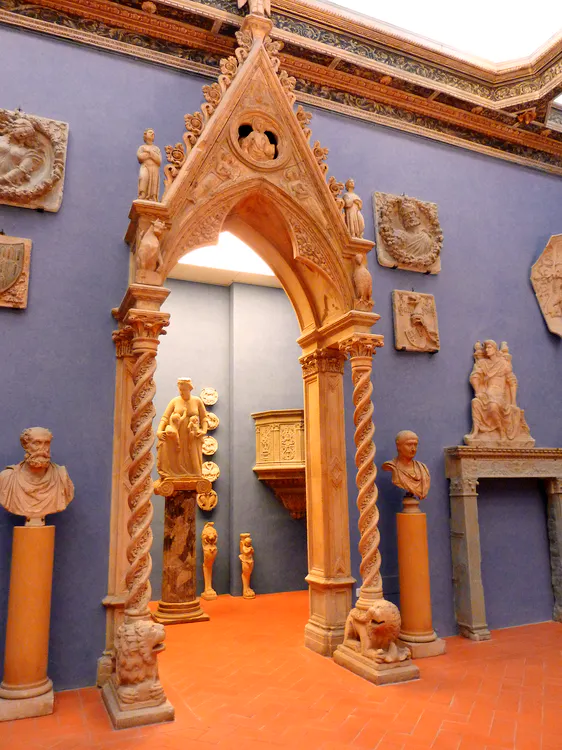
11. Bardini Museum
The Bardini Museum takes its name from Bardini, who I mentioned above. His quirky museum holds art works he collected on his own behalf.
Bardini even built his eponymous museum, which is now renovated, to house his treasures. Then, he bequeathed the collection to Florence in his will.
The museum is a bit difficult to visit. Many of the art objects and antiques are unlabeled and scattered haphazardly across 20 rooms. They’re not set up in chronological order and are mixed and matched.
But amongst the blue walls, you’ll find works by Donatello, Della Robbia, Bernardo Daddi, and Giambologna.
12. Porta San Niccolo
After the Bardini Museum, head down Via San Niccolo to San Niccolo Tower. Dating from 1324, San Niccolo was part of Florence’s old city walls built by Arnolfo di Cambio.
It was one of the entrance gates and watch stations of Florence. At 200 feet, San Niccolo is the tallest of Florence’s ancient city towers still standing.
The tower is located in Piazza Poggi. From the crenelated terrace at the top, you have nice 360 panoramic views of Florence.
READ: Guide To The Best Viewpoints In Florence
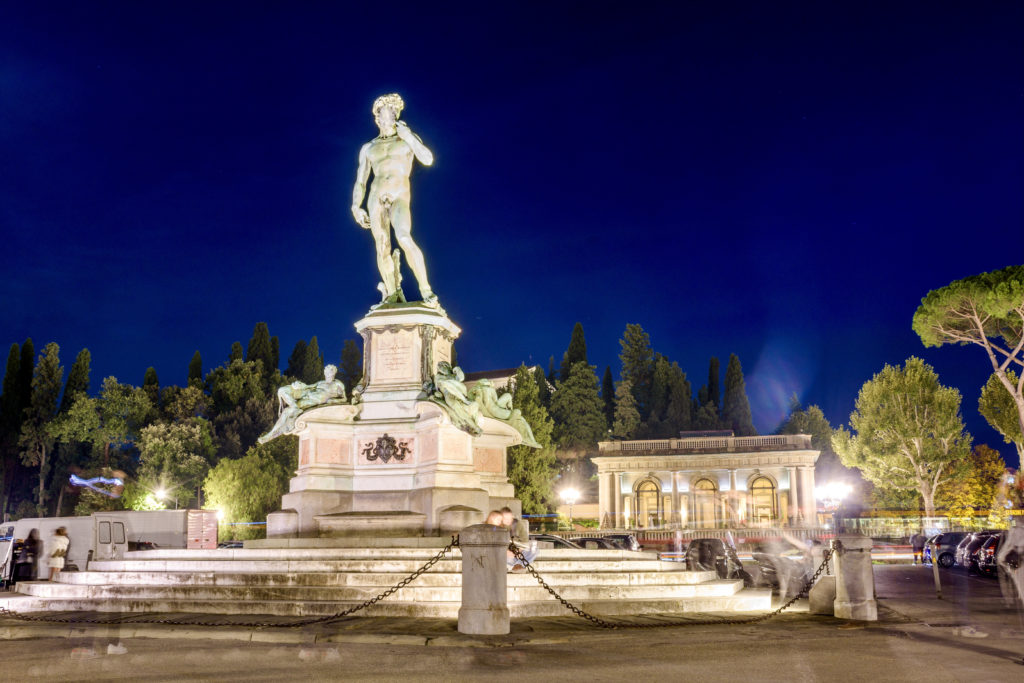
13. Piazzale Michelangelo
Piazzale Michelangelo is one of Florence’s best viewpoints. Zig zag up the path from Piazza Poggi. From its expansive terrace, you’ll have a postcard worthy view of the entire cityscape of Florence.
Like Piazza della Signoria, the square has a monumental copy of Michelangelo’s David. It was delivered by nine pairs of oxen in 1873.
Piazzale Michelangelo isn’t ancient. In fact, it’s a fairly recent addition, designed by Giuseppe Poggi. It was built in 1869 as part of the redevelopment of Florence.
In addition to the David, there are bronze copies of the four allegories from the Medici Chapel in San Lorenzo.
14. San Miniato al Monte
5 more minutes uphill, you’ll find one of Florence’s most beautiful and best preserved ancient churches, the Basilica of San Miniato al Monte.
The basilica is Florence’s crowning glory, with even better views than Piazzale Michelangelo. Building on the church began in 1018. Like the Baptistry, the church is over 1000 years old and one of Florence’s oldest monuments.
The church takes its name from Minias, an Armenian prince who was Florence’s first martyr. Legend holds that Minias picked up his decapitated head and flew over the Arno to the church site. San Miniato Church is dedicated to the saint.
San Miniato has Florence’s emblematic white and green marble facade. It’s a harmonious piece of Tuscan Romanesque architecture, a very unique building in Florence.
When you walk through the turquoise doors, you’re greeted by a spectacular interior. Every inch of the church is covered in mosaics, gold leaf, or geometric patterns, with a spectacular mosaic decorating the half dome in the apse. The marble floor is decorated with zodiac signs.
The monks of San Miniato still sing Gregorian chants at Vespers, in a small chapel at the back of the church. Anyone can go and listen. They usually chant at 5:30 pm in the summer and 4:30 pm in the winter.
To learn about this historic church, you can also book a 2 hour guided tour.
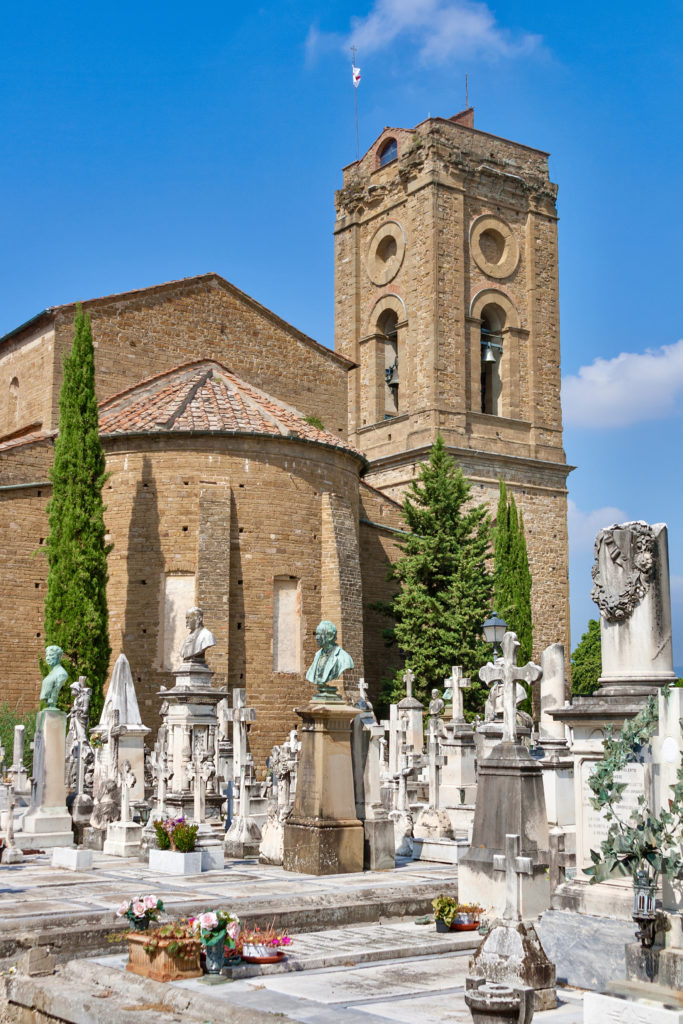
15. Delle Porte Sante Cemetery
For more crowd free views of Florence, walk behind San Miniato to the Sacred Doors Cemetery.
This ancient graveyard is an open air museum, stuffed with beautiful funeral art and memorials. The private temples and tombs are in varying architectural styles, from Renaissance to Art Deco. Many of them are inspired by Florence’s churches.
The most famous effigy (show above) depicts the Mazzone siblings dancing together, fully united in the after life.
Is The Oltrarno Worth Visiting?
100% yes, the Oltrarno is worth visiting for one day, especially if you have more than 1 day in Florence. If you have 3 days in Florence, it’s easy to fit in.
The Oltrarno has important works of Renaissance art, palaces and churches, and the best parks and viewpoints in Florence. It’s a good place to escape Florence’s adoring crowds, who dominate the centro storico.
Oltrarno is also fast becoming a hip neighborhood in Florence. It’s a place to see and be seen and boasts some excellent restaurants.
Tips For A One Day Oltrarno Itinerary
Where To Stay in The Oltrarno
I recommend the Villa Cora. It’s a luxury hotel housed in a restored 19th century home. The gardens are lovely with 100 varieties of roses.
The hotel makes you feel like you’re staying in a countryside retreat. Yet, you’re not far from the Oltrarno attractions or Florence’s popular landmarks across the Arno.
The Palazzo Guicciardini is another great choice. The hotel has Renaissance frescos and original terra cotta floors, so pretty that it seems almost like a museum.
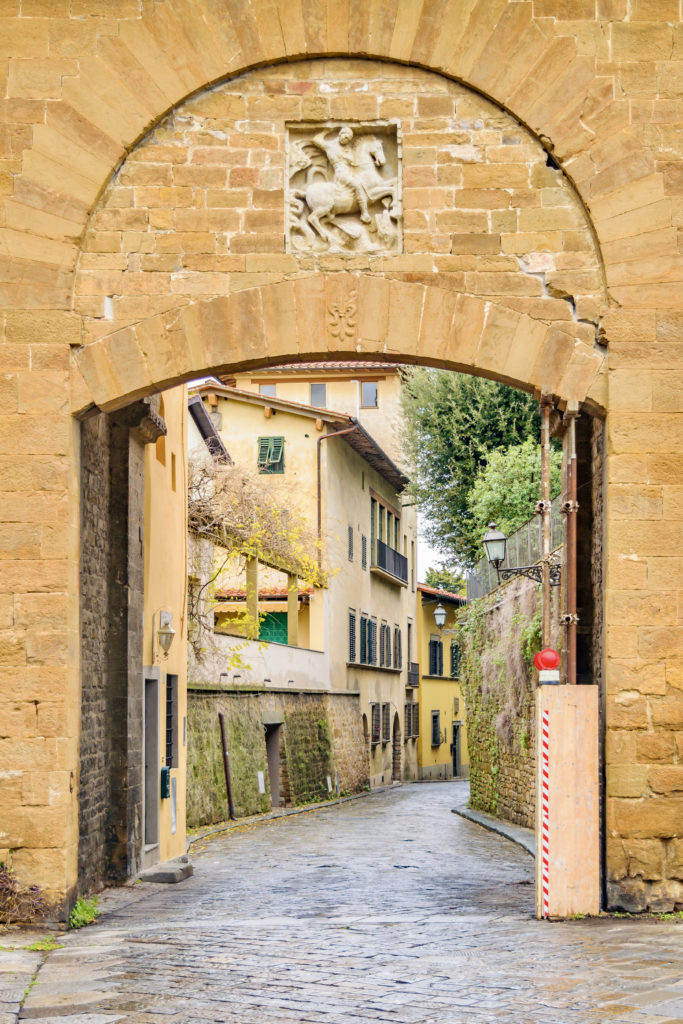
The Hotel Lungarno is part of the hotel chain founded by the Ferragamo family. It has its own private art collection, a Michelin restaurant, and Arno River views.
If you want a B&B, check out the San Pier Novello. The hotel is stuffed with treasures and art work from the 18th century, with beautifully restored antique furniture.
Where To Eat In The Oltarno
If you want pizza, the most famous spot is Gusta Osteria. If you want to grab a quick lunch or panini, try Fratelli Lunardi or Il Santino.
For dinner, check out Santo Bevitore (make reservations) or Angiolino Trattoria. Both of these dinner spots are on Via Santo Spirito. Another good option is La Casalinga on Via dei Michelozzi.
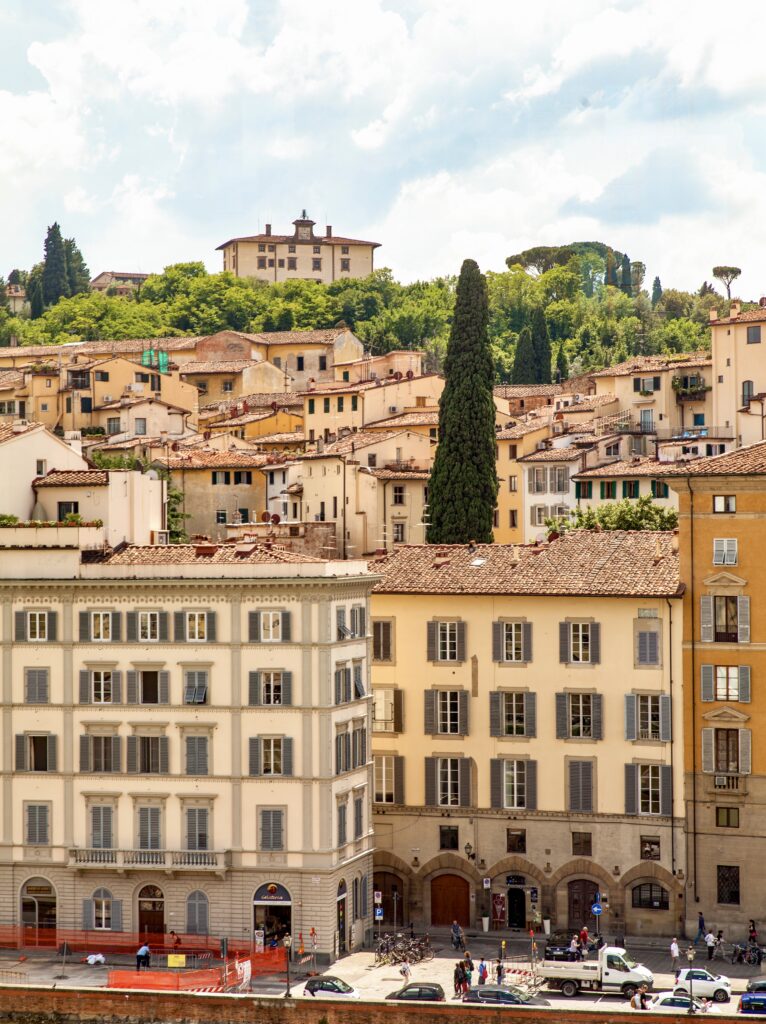
How To Get Around the Oltrarno
The Oltrarno neighborhood is easily walkable. Exploring on foot is the best way to experience its charm and character.
You can also rent a bike or take a guided bike tour if you prefer. Another option is to use public transportation, such as buses or taxis, to get around.
I hope you’ve enjoyed my 1 day in the Oltrarno itinerary. You may enjoy these other Florence travel guides and resources:
- 1 day itinerary for Florence
- 3 day itinerary for Florence
- Best museums in Florence
- Hidden gems in Florence
- Top Attractions in Florence
- Florence art bucket list
- Best day trips from Florence
- Guide to the Medici Palaces
- How To See Michelangelo’s David
- Guide to the Uffizi Gallery
- How To Visit Florence’s Duomo
If you you need a neighborhood guide for the Oltrarno, pin it for later.

